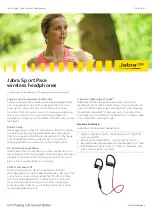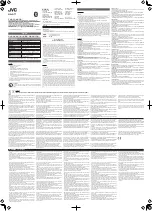
Bluetooth Device Identity
Every Bluetooth device has a unique Bluetooth Device Address (BDA) assigned to it during the
manufacturing process. This address cannot be changed.
The BDA is usually displayed in hexadecimal format; 00:D0:B7:03:2E:9F is a valid BDA. Each
Bluetooth device also has a configurable, user-friendly name to help distinguish it from other
devices.
The user-friendly name may be up to 99 alphanumeric characters in length and may contain
spaces. My Personal Computer is a valid user-friendly name.
Encryption
Encrypting translates data into an unreadable format using a secret key or password. Decrypting
the data requires the same key or password that was used to encrypt it.
Encryption in BTW is based on the same passkey or Link Key that is used for Authentication. If
Authentication is not enabled, the key will not be available and encryption will not take place.
Link Key
A Link Key is a unique, internally generated access code. Link Keys are generated automatically
when devices are paired or when authentication is enabled.
Link Keys are created by combining the following three items:
The Passkey
The Bluetooth Device Address
An internally generated random number
After a link key is generated, manual entry of the passkey is not require.
Pairing Devices
Pairing devices establishes a rather permanent relationship between two devices. It creates a
permanent security link between the two and enables easy access to all the available services
without having to enter access information every time a connection is attempted. Paired devices
share a unique Link Key that they exchange when they are establishing the connection. Moreover,
the mate of a pair will always appear in
My Bluetooth Places
even if the mate is disconnected or
is beyond connection range.
Paired devices remain paired even in the following scenario:
One of the devices is not powered up.
A service connection is interrupted or the service stopped.
One or both devices have been rebooted.
©2005 All rights reserved.
47









































